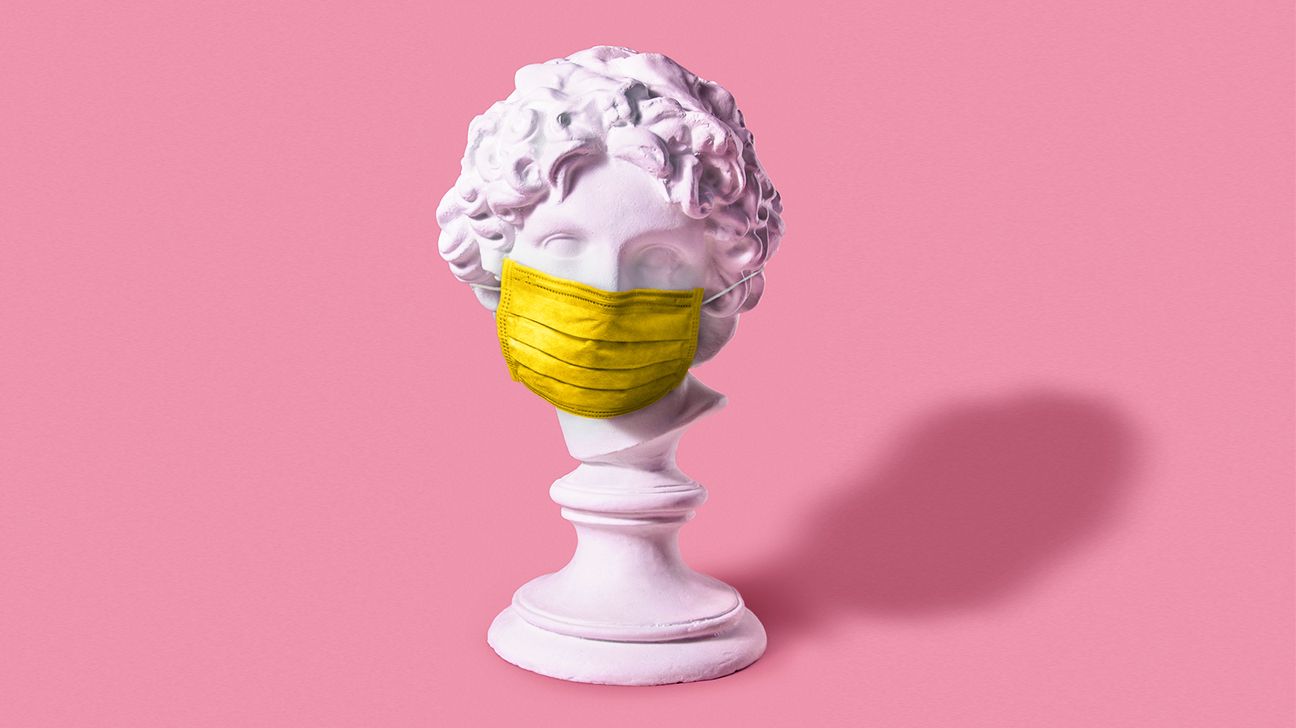The CDC recommends that all people wear cloth face masks in public places where it’s difficult to maintain a 6-foot distance from others. This will help slow the spread of the virus from people without symptoms or people who do not know they have contracted the virus. Cloth face masks should be worn while continuing to practice social distancing. Instructions for making masks at home can be found here. Note: It’s critical to reserve surgical masks and N95 respirators for healthcare workers.
Face masks: so hot this season. (We need to take the LOLs when we can get ’em, right?).
In response to the COVID-19 pandemic, the CDC now recommends that people wear face masks in public, along with other safety measures, to help slow the spread of the virus. Here’s what you need to know.
Masks are one of many tools to protect against the transmission of viruses. One way you can catch a virus is by inhaling or ingesting droplets of respiratory fluid from someone who has it.
That doesn’t mean licking someone’s face — it can simply mean breathing too close to someone who talks, coughs, or sneezes without covering their mouth.
According to a 2013 study, the spread of a virus can be significantly reduced if people who have the virus wear surgical masks. And a 2015 study noted that surgical masks are a vital means of physical protection for healthcare workers when treating people who are sick.
Also, for all that is holy: WASH 👏YOUR 👏HANDS. 👏
Frequent handwashing is an incredibly effective way to protect yourself, since viruses can live on all kinds of surfaces (doorknobs, cardboard packaging, plastic, you name it) that you touch all the time.
There are a few types of masks you’ll see in circulation: cloth face coverings, surgical masks, and N95 respirators.
Before you read on, please note that surgical masks and N95 respirators are considered critical supplies by the CDC. Please save them for the healthcare workers and medical responders on the front lines.
Cloth face coverings
The CDC recommends that people wear a cloth face covering in public places, especially in areas where it’s difficult to maintain social distance (grabbing groceries, picking up necessities, while in transit, etc.).
Face coverings can be made out of materials you probably already have at home, like a bandana, any square piece of fabric, that old T-shirt you never wear, or even a coffee filter. Here are instructions on how to make them.
Surgical face masks
Surgical face masks are relatively loose-fitting disposable masks. They are FDA-approved medical devices, and many healthcare professionals, including dentists and doctors, use them when treating patients.
Only masks with a fine mesh can trap small organisms like viruses, and the masks you find at your local drugstore probably won’t do the trick. They also have to be worn the right way to be effective.
And face masks, no matter how effective, won’t protect your eyes — a possible target for airborne contaminants.
Respirator face masks
Respirator face masks are a bit of a step up. Unlike surgical face masks, respirators are certified by the National Institute for Occupational Safety and Health (NIOSH) and the CDC to protect against large and small particles.
If they fit someone’s face to form a perfect seal, respirators can protect against airborne contagions like anthrax and tuberculosis.
This kind of mask is often referred to as an N95 respirator mask because it can filter 95 percent of airborne particles — including viruses and potentially toxic materials like paint.
Unlike surgical face masks, respirator masks have a rating system to designate how effectively they block out airborne contaminants. Some can filter up to 99.7 percent of small particles from the air, and those masks are given a 100 rating.
A face mask is only effective if worn correctly. Here’s how to do it:
- Make sure the mask fits firmly over your nose, mouth, and chin.
- Check that you’re able to breathe normally without restriction.
- Don’t touch your mask until you take it off.
- Wear the mask in public places to protect people (even if you don’t feel sick) and stay 6 feet away from others.
- After removing the mask, wash your hands for at least 20 seconds.
- If the mask is made of cloth, wash it regularly.
- NEVER reuse a disposable mask. Toss it in the trash immediately.
Even if you’re not sick, immunosuppressed, particularly at risk, or a healthcare professional, the answer is “yes.”
The only people that should not wear masks, per CDC guidelines, are children under the age of 2, those who have trouble breathing, or anyone who is unconscious, incapacitated, or unable to remove a mask themselves.
Apart from those groups, everyone else should wear a mask in public. Be sure take other safety measures seriously (like WASHING YOUR HANDS!), and don’t rob healthcare professionals of the equipment they need during this urgent time.


